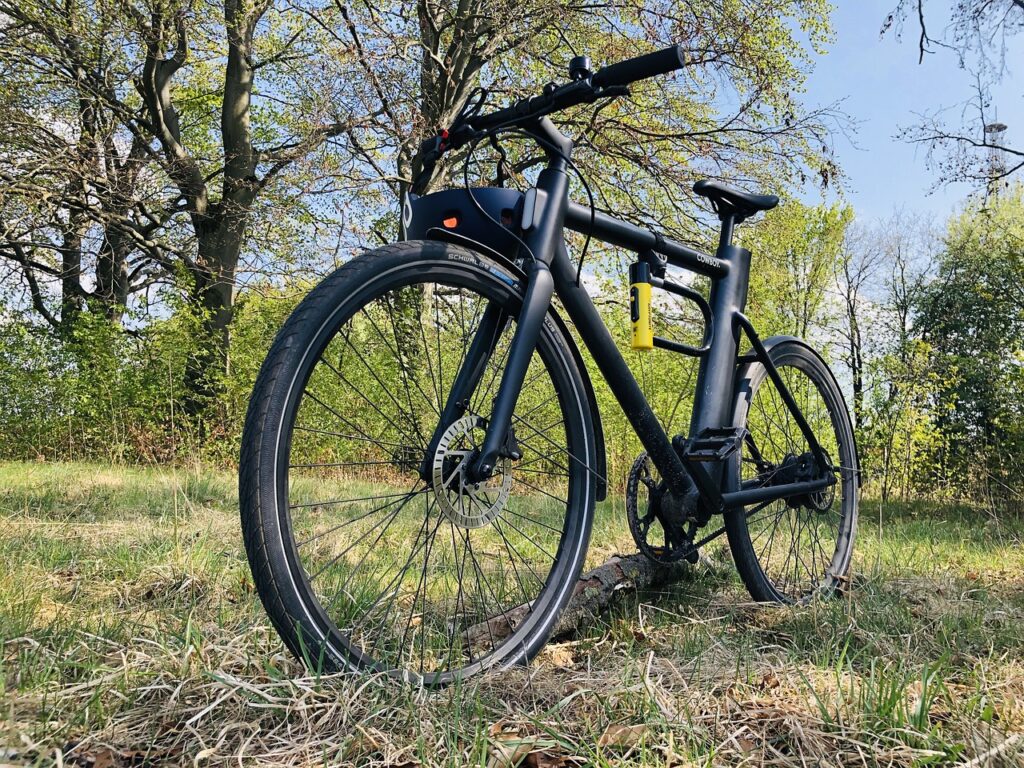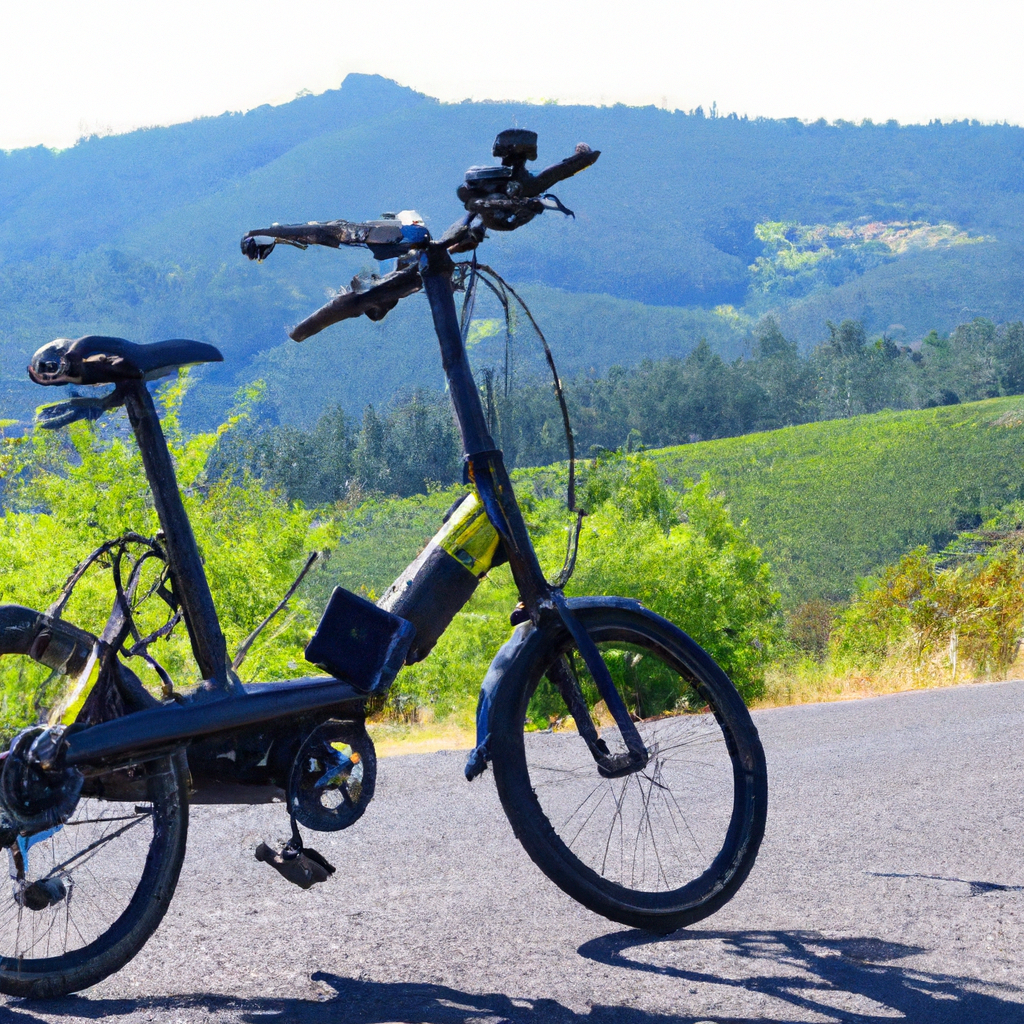So, you’ve just gotten your shiny new e-bike and you can’t wait to hit the road? Well, before you pedal off into the sunset, it’s important to plan your first e-bike route to ensure a smooth and enjoyable ride. In this article, we will provide you with valuable tips and tools to help you with this task. Whether you’re navigating the urban jungle or exploring off-road trails, we’ve got you covered. So, hop on and let’s plan your first e-bike adventure!

1. Choosing the Right Route
When planning your first e-bike route, there are several factors to consider to ensure a safe and enjoyable experience. First, you need to consider your fitness level. E-bikes provide pedal-assist, but it’s still important to choose a route that matches your fitness abilities. If you’re a beginner, start with shorter distances and gradually increase as you build endurance.
Next, determine the distance you’re comfortable cycling. This will depend on factors such as your fitness level and the time you have available. Consider how long you’re willing to spend on your e-bike adventure and choose a distance that aligns with your preferences.
Researching bike-friendly routes is essential to ensure a smooth ride. Look for routes that are specifically designated for cyclists or have bike lanes for your safety and convenience. Check online forums, cycling apps, or consult local bike shops for recommendations on popular routes in your area.
In addition to bike-friendly routes, it’s important to consider the terrain you’ll encounter. Some riders prefer a flat route for a leisurely ride, while others enjoy the challenge of hills and inclines. Choose a route with terrain that matches your preferences and abilities.
Lastly, plan for rests and breaks along your route. Consider scenic spots, parks, or cafes where you can take a break, hydrate, and recharge before continuing your journey. Taking breaks not only helps prevent fatigue but also allows you to enjoy the surroundings and make the most of your e-bike adventure.
2. Utilizing Online Mapping Tools
Online mapping tools are a valuable resource for planning your e-bike route. They provide detailed information on various routes, distance, elevation, and even user reviews. Here are some popular online mapping tools that can assist you in planning your route:
Google Maps
Google Maps is a widely used mapping tool that offers a cycling feature. It provides detailed directions for cycling routes, including bike lanes and trails. You can input your starting point and destination, and Google Maps will calculate the best route for you. It also provides estimated cycling times, turn-by-turn directions, and real-time traffic updates.
Komoot
Komoot is a comprehensive mapping tool specifically designed for outdoor activities, including cycling. It offers detailed trail maps, elevation profiles, and highlights popular cycling routes. Komoot allows you to customize your route based on your preferences, and you can even download offline maps for navigation in areas with limited internet connection.
Strava
Strava is a popular fitness app that also functions as a mapping tool. It allows you to track your rides, record your performance, and analyze your cycling data. In addition to these features, Strava offers a heat map that shows the most popular routes in an area. You can leverage this information to find well-tested and well-loved cycling routes.
Ride with GPS
Ride with GPS is another mapping tool that caters specifically to cyclists. It allows you to plan your route, customize it with waypoints, and even add cue sheets for turn-by-turn directions. Ride with GPS also provides elevation profiles and allows you to download offline maps for navigation during your ride.
By utilizing these mapping tools, you can easily plan your e-bike route with detailed information and accurate directions.
3. Checking Local Bike Laws and Regulations
Before embarking on your e-bike adventure, it’s crucial to familiarize yourself with local bike laws and regulations. This will help ensure your safety and prevent any legal issues. Here are some important considerations:
Know the local traffic rules
Educate yourself on the traffic rules and regulations that apply to cyclists in your area. Familiarize yourself with common traffic signs, hand signals, and right-of-way rules. Obeying traffic laws not only ensures your safety but also promotes a harmonious coexistence with other road users.
Be aware of bike lane restrictions
In some areas, there may be specific restrictions regarding the use of bike lanes. Some bike lanes are designated for certain types of cyclists, such as commuters or recreational riders. Be aware of any restrictions or guidelines related to bike lane usage to avoid inadvertently violating any rules.
Understand e-bike regulations
E-bike regulations vary from country to country and even within different states or provinces. Familiarize yourself with the specific regulations governing e-bike usage in your area. Pay attention to speed limits, age restrictions, helmet requirements, and any other relevant regulations. Understanding these regulations will ensure that you ride your e-bike within the legal boundaries.
By checking local bike laws and regulations, you can ride confidently and responsibly, knowing that you’re adhering to the rules and keeping yourself and others safe.
4. Considering Elevation and Gradient
When planning your e-bike route, it’s essential to consider the elevation and gradient of the terrain. Here are some key factors to keep in mind:
Identify the elevation changes
Understanding the elevation changes along your route will give you an idea of the level of difficulty you can expect. Some e-bike riders enjoy the challenge of uphill climbs, while others prefer a more relaxed ride on flatter terrain. Take note of any significant changes in elevation to prepare yourself physically and mentally.
Assess the difficulty level
Elevation alone doesn’t determine the difficulty of a route. Factors such as the length of the climb, the gradient, and surface condition all contribute to the overall difficulty level. Consider your fitness level and the capabilities of your e-bike when assessing the difficulty of a route. Gradually increase the difficulty of your rides as you gain more experience and confidence.
Plan for uphill and downhill sections
If your route includes significant uphill or downhill sections, plan your ride accordingly. It’s advisable to conserve battery power during uphill climbs and use it to your advantage during downhill descents. Understanding the timing and distribution of these sections will help you manage your energy and optimize your e-bike’s performance.
Consider alternative routes
If you’re uncertain about your ability to tackle a particular route or if you want to avoid steep climbs altogether, consider alternative routes. There may be scenic detours or longer but flatter routes that still offer interesting sights and a pleasurable riding experience.
By considering elevation and gradient when planning your e-bike route, you can tailor your ride to your fitness level, preferences, and desired level of difficulty.

5. Taking Safety Precautions
Safety should always be a top priority when riding an e-bike. Here are some crucial safety precautions to follow:
Wear appropriate protective gear
Always wear a properly fitted helmet to protect your head in case of an accident. In addition to a helmet, consider wearing cycling gloves, knee pads, and elbow pads, especially if you’re venturing into off-road trails or rough terrain. Protective gear can help minimize the risk of injury and provide peace of mind during your ride.
Follow safety guidelines
Obey traffic rules, signals, and signs, just like any other road user. Signal your intentions to other riders and motorists with clear hand signals. Maintain a safe distance from vehicles, pedestrians, and other cyclists. By following safety guidelines, you contribute to a safer riding environment for everyone.
Use bike lights and reflectors
If you’re planning to ride during low-light conditions or at night, ensure that your e-bike is equipped with proper lighting. Use bright front and rear lights to enhance your visibility to other road users. Additionally, affix reflectors to your bike and your body to increase your visibility even further.
Inform someone about your route
Before setting off on your e-bike adventure, let someone know about your planned route and estimated return time. This ensures that there’s a safety net in place in case of an emergency. Share your contact information, the route you intend to take, and any checkpoints or rest stops you plan to make along the way.
By taking these safety precautions, you can enjoy your e-bike ride with peace of mind, knowing that you’re prepared for any situation that may arise.
6. Planning Charging Stops
One of the unique considerations for e-bike riders is planning for charging stops. Here’s what you need to keep in mind:
Identify locations with charging facilities
Research the area along your route for locations with charging facilities. Some cafes, restaurants, or public spaces may offer charging stations specifically for e-bikes. Plan your route to include checkpoints where you can recharge your battery if needed.
Determine the battery range
Understanding your e-bike’s battery range is crucial for planning charging stops. Know how far you can comfortably go on a full charge to calculate when and where you’ll need to recharge. Take terrain, elevation changes, and riding conditions into account, as they can affect battery consumption.
Plan for charging time
Factor in the charging time required to replenish your battery. Charging times can vary depending on the battery capacity and the charging station’s power output. Plan for longer breaks at charging locations to ensure that your battery is adequately charged for the next leg of your journey.
By planning in advance for charging stops, you can ensure a continuous and uninterrupted e-bike ride without the fear of running out of battery power.

7. Considering Bike-Friendly Infrastructure
To enhance your e-bike experience, it’s beneficial to choose routes that prioritize bike-friendly infrastructure. Here’s what to look out for:
Look for bike lanes and trails
Select routes that offer designated bike lanes or dedicated cycling trails. These infrastructure features provide a safer and more enjoyable riding experience, separating cyclists from vehicular traffic. Bike lanes and trails often have smoother surfaces, clear signage, and a welcoming environment for riders.
Avoid busy roads and highways
When planning your e-bike route, try to avoid busy roads and highways whenever possible. These roads typically have higher traffic volumes and faster-moving vehicles, which can be intimidating and potentially dangerous for cyclists. Opt for quieter streets, residential areas, or back roads with lower traffic levels.
Utilize bike-friendly facilities
Some cities and towns offer bike-friendly facilities, such as bike racks, repair stations, or even bike-sharing programs. Research the areas along your route to identify these facilities and incorporate them into your plan. Utilizing these amenities can make your ride more convenient and enjoyable.
By choosing bike-friendly infrastructure, you can maximize the safety and comfort of your e-bike journey, making it a pleasant experience from start to finish.
8. Checking Weather and Conditions
Considering weather and current conditions is essential for planning a successful e-bike route. Here are some factors to keep in mind:
Check weather forecasts
Before heading out, check the weather forecast. Look for any potential rain, strong winds, or extreme temperatures that could affect your ride. Be prepared for sudden weather changes and adjust your route or plans accordingly.
Consider wind speed and direction
Wind can significantly impact your riding experience, especially on e-bikes. Strong headwinds can slow you down and drain your battery faster, while tailwinds can provide an enjoyable boost. Take wind speed and direction into account when planning your route, and factor it into your estimated ride time.
Plan for adverse conditions
In addition to weather forecasts, consider other adverse conditions such as heavy traffic, road construction, or road closures. These conditions can affect your route or require detours. Stay updated with local news or traffic updates to avoid any unexpected obstacles during your ride.
Be prepared with appropriate clothing
Dress appropriately for the weather conditions you may encounter during your ride. Wear lightweight, moisture-wicking clothing in hot weather to stay cool and avoid overheating. In colder or rainy conditions, layer your clothing to stay warm and consider wearing waterproof gear to protect yourself from the elements.
By checking weather and conditions beforehand, you can better prepare for your e-bike ride and ensure your comfort and safety throughout the journey.

9. Planning for Navigation
Efficient navigation is key to a successful e-bike route. Here are some tips for effective navigation:
Use GPS devices or bike computers
Consider using a GPS device or bike computer to navigate your route. These devices provide turn-by-turn directions, real-time tracking, and distance information. Some e-bike models even have built-in navigation systems that can guide you along your route.
Download offline maps
If you’re venturing into areas with limited internet connectivity, it’s wise to download offline maps for navigation. Many mapping tools, including Google Maps and Ride with GPS, offer offline map downloads that can be accessed without a network connection. This ensures that you can navigate your route accurately without relying on a continuous internet connection.
Plan for detours or alternate routes
Sometimes, unexpected road closures, construction, or other unforeseen circumstances may require you to take detours or alternate routes. Familiarize yourself with potential detour options along your route and be prepared to adjust accordingly. Flexibility is crucial when planning your e-bike route, allowing you to make the most of your journey regardless of any unexpected changes.
By implementing effective navigation strategies, you can confidently navigate your e-bike route without getting lost or veering off course.
10. Considering Sights and Points of Interest
While planning your e-bike route, take the opportunity to discover interesting attractions, landmarks, and scenic detours along the way. Here’s how:
Research attractions along the route
Research the area you’ll be riding through to identify any attractions or points of interest. This could include museums, parks, historical sites, or natural landmarks. Incorporate these attractions into your route, allowing for a pleasant break and an opportunity to explore and learn more about the area you’re visiting.
Plan for scenic detours
If you’re a fan of breathtaking views and natural beauty, plan for scenic detours along your route. This could involve riding along beautiful coastlines, through serene forests, or to picturesque viewpoints. Take your time to soak in the beauty of these locations and capture some memorable photos.
Explore interesting landmarks
Your e-bike route may pass by interesting landmarks, such as local artwork, iconic buildings, or famous monuments. Make a note of these landmarks and schedule stops to appreciate and experience them firsthand. Learning about the history or significance of these landmarks can add depth and meaning to your e-bike adventure.
By considering sights and points of interest along your route, you can transform your e-bike ride into a rich and rewarding experience, immersing yourself in the local culture and exploring new places.
Planning your first e-bike route requires careful consideration of various factors to ensure a safe, enjoyable, and memorable ride. By following these tips and utilizing the available tools, you can confidently plan your route, navigate with ease, and make the most of your e-bike adventure. So grab your helmet, charge your battery, and get ready for an exciting journey on your e-bike!




